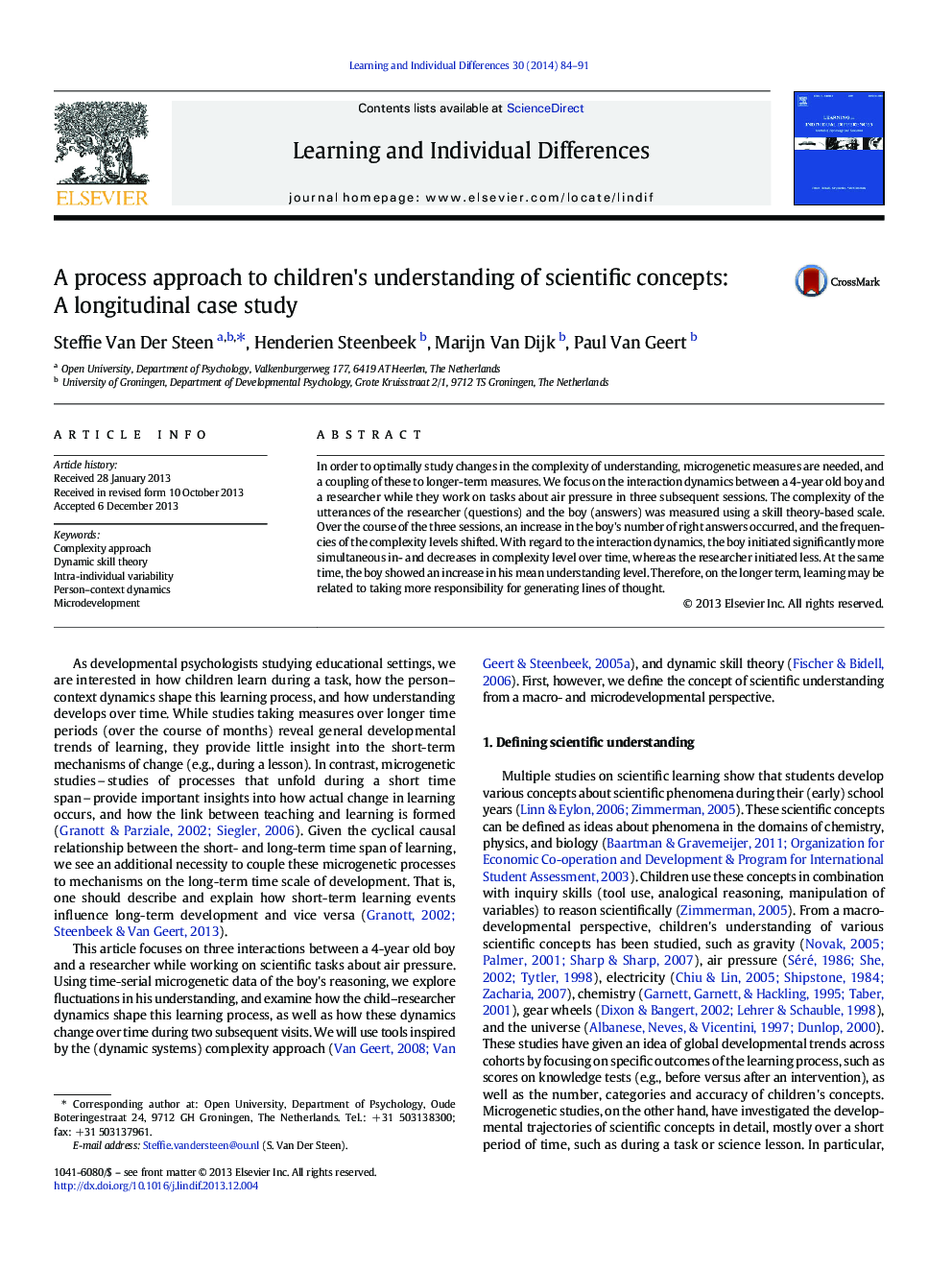| Article ID | Journal | Published Year | Pages | File Type |
|---|---|---|---|---|
| 364889 | Learning and Individual Differences | 2014 | 8 Pages |
•We use a microgenetic method to study changes in the complexity of understanding.•Variability in complexity levels seemed not to be clustered in specific parts of the interaction.•The boy's frequencies of the different complexity levels shifted over time.•In/decreases in the researcher's complexity levels were related to those of the boy.•In next sessions, the student initiated significantly more simultaneous in/decreases.
In order to optimally study changes in the complexity of understanding, microgenetic measures are needed, and a coupling of these to longer-term measures. We focus on the interaction dynamics between a 4-year old boy and a researcher while they work on tasks about air pressure in three subsequent sessions. The complexity of the utterances of the researcher (questions) and the boy (answers) was measured using a skill theory-based scale. Over the course of the three sessions, an increase in the boy's number of right answers occurred, and the frequencies of the complexity levels shifted. With regard to the interaction dynamics, the boy initiated significantly more simultaneous in- and decreases in complexity level over time, whereas the researcher initiated less. At the same time, the boy showed an increase in his mean understanding level. Therefore, on the longer term, learning may be related to taking more responsibility for generating lines of thought.
